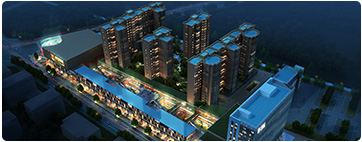Transparent Web Cache Redirect on the SmartSwitch Router
Introduction
Access to the Internet has gone from a luxury to a necessity in today's business environment. This has resulted in a tremendous increase in enterprise and service provider traffic. Quite often, this is redundant information being transferred. For example, users may access the same pages over and over. One costly solution is to just keep adding more bandwidth. However, WAN access is expensive, whether you're an enterprise owner or a service provider.
Simply adding bandwidth is just a "band-aid" solution, and does not address the core problem: the increased volume of duplicate data. It simply covers up the issue, causing the same problem to reoccur. Caching web objects preserves bandwidth by reducing the number of duplicate requests sent out over WAN links. This paper addresses various caching schemes and discusses the advantages of the transparent web cache feature of the SmartSwitch Router 2000, 8000 and 8600.
Quick Overview of Cache Server Types
A Web Cache Server caches HTTP objects. It resides either directly in the path to the Internet, monitoring all traffic; or to the side with only HTTP traffic redirected to it (see Figure 1). When the cache server sees the first request for an object, it sends the request to the intended web site, and caches the reply in its memory. The next time the Web Cache Server sees a request for that same object, it traps the request and responds to the client with the locally stored object, with the responding packet appearing to have come from the requested server. Most Web Cache Servers set time limits on how long an object is stored locally. There are many different Web Cache Server vendors, and how they maintain their caches is beyond the scope of this paper. What's important here is how the SmartSwitch Router enhances a Web Cache Server in the network.
When the Web Cache Server sits in the Internet path, it sees all the network traffic to the Internet. The benefit to this solution is that it is transparent to the clients accessing the network. That is, there is no need to program the clients to send their traffic to the Web Cache Server. The down side, however, is that it processes other forms of traffic besides HTTP, which may cause performance degradation and also introduces an unnecessary point of failure into the network. For these reasons, this configuration is not recommended.
The alternative is to have the Web Cache Server positioned peripheral to the network, with only HTTP traffic directed to it. This removes the bottleneck caused by other network traffic, since only HTTP traffic is redirected to the server. Initial solutions required that all clients on the network be configured to send their HTTP requests to the Web Cache Server. As a result, the network administrator needed to configure every client on the network to send HTTP requests to the Web Cache Server and all other Internet traffic through normal paths. Aside from the onerous task of configuring these systems, there was the added problem that some of these Web Cache Servers could only support a few thousand connections at a time. Once these limits were met, new sessions were dropped. Additionally, if the server went down, HTTP traffic stopped. This obviously has a negative impact on customers. The solution is transparent web cache redirection.
Transparent Web Cache Redirect
Transparent web cache redirect on the SmartSwitch Router addresses these issues. Instead of reconfiguring all of the clients, the network administrator needs only to configure the SmartSwitch Router. With a few commands, the administrator can transparently redirect all HTTP traffic or specific HTTP traffic to a Web Cache Server. The SmartSwitch Router may be configured to keep track of the number of current sessions connected to the Web Cache Server and compare that to a preset maximum number of connections the server can support. Once the maximum is reached, new traffic is sent directly to the Internet, bypassing the Web Cache Server until the number of sessions falls below the threshold.
Advanced Web Cache Redirect Features
When they receive a request for an object not already in its memory, some servers make requests to the web site on the Internet using the Web Cache Server's IP address as the source address.There are some web sites that use the source IP address for accounting purposes or for access control. Since some Web Cache Servers modify the source IP address, the web site may see this as an invalid address and respond with an error message. The Web Cache Server would then incorrectly cache the error message for future requests. The SmartSwitch Router can be configured so that traffic destined for such sites is sent directly to the site, not through the Web Cache Server.
There may also be instances when a proxy server is used for HTTP requests. It may be configured to receive requests with a port address other than 80 for HTTP traffic, and then its HTTP requests would be sent to the Internet using port 80. In this situation, the SmartSwitch Router can be configured to redirect traffic other than to port 80. The SmartSwitch Router would sit between the proxy and the clients. As traffic is sent to the proxy, the SmartSwitch Router would redirect it to the Web Cache Server based on the different port number. The Web Cache Server, after being configured to recognize this new port number, would process the packet in its normal fashion.
Some sites may be concerned that one Web Cache Server is handling all of the traffic. The SmartSwitch Router solves this problem. The system administrator can organize a group of Web Cache Servers into a pool, and the SmartSwitch Router will load balance the redirection of HTTP traffic over the pool of Web Cache Servers.
Sample Configurations
The Web Cache Server and the SmartSwitch Router may be located either at the enterprise or the service provider level. They could also be placed at both locations, with commonly accessed pages for a single enterprise kept at the enterprise level, and commonly requested pages for multiple enterprises kept at the service provider level. The enterprise manager frees up valuable bandwidth by cutting down the amount of duplicate web object traffic. Optimizing the bandwidth on the access lines has the immediate benefit of delaying the need for adding new access lines. The service provider frees up valuable bandwidth for accessing the Internet by reducing the amount of duplicate web object traffic, and has the benefit of less duplicate traffic from enterprise customers. In both cases, there is an immediate improvement in the available bandwidth for WAN traffic.
The best way to illustrate this is through examples. Suppose that an enterprise manager has purchased a SmartSwitch Router 8600 and a Web Cache Server. The Web Cache Server has an IP address of 186.89.10.51 and access to the Internet is on interface ip1 (see figure 2). The selected Web Cache Server supports 10,000 active connections. There is no HTTP proxy server and only one Web Cache Server installed. Some of the users access the web site www.cabletron.com at 188.83.115.10. The site checks the source address to confirm that the client is allowed access. While in the configuration mode on the SmartSwitch Router, the following commands would be entered;
web-cache c1 create server-list s1 list 186.89.10.51
web-cache c1 set-maximum-connection s1 10000
web-cache c1 create bypass-list list 188.83.115.10
web-cache c1 apply interface ip1
These commands create a web cache redirect with the name c1 and a server list associated with it of the name s1. The server list s1 has only one Web Cache Server entry, 186.89.10.51. The set-maximum-connection command sets the total number of active connections spread out over the server list s1 (containing only one server) at 10,000. The bypass list allows traffic destined to address 188.83.115.10 to be sent directly to the Internet, and not redirected to the Web Cache Server. It is also possible to apply an ACL profile on the traffic instead of a specific address (or list or range of addresses). This is accomplished by replacing 'list 188.83.115.10' with 'profile p1,' where p1 is the name of the profile to apply.
Web Cache Server load balancing is accomplished by putting a list of the IP addresses of the Web Cache Servers within quotation marks. The example below shows how to configure the SmartSwitch Router if there were two Web Cache Servers in the s1 list, and traffic with port 81 needed redirection as well. The commands are entered when the SmartSwitch Router is in configuration mode.
web-cache c1 create server-list s1 list "186.89.10.51 186.89.10.52"
web-cache c1 set-maximum-connection s1 10000
web-cache c1 set http-port 81
web-cache c1 create bypass-list list 188.83.115.10
web-cache c1 apply interface ip1
Conclusion
These simple commands unleash dramatic performance increases on the network. The SmartSwitch Router harnesses the power of a Web Cache Server, and makes critical performance-enhancing processes truly transparent to clients on the network. Using the transparent redirect feature of the SmartSwitch Router simplifies the implementation of a Web Cache Server. The redirection feature alleviates concerns over Web Cache Servers becoming single points of failure on the network by integrating redundancy and override features. Additionally, using a Web Cache Server improves response time by bringing data closer to clients, and increases available WAN bandwidth by removing redundant traffic.When this is added to other features found in the SmartSwitch Router, such as VRRP for redundancy, QoS for traffic shaping, IP policy routing for security, and traffic management at wire speed, the administrator sees a tremendous return on their investment in a SmartSwitch Router 2000, 8000 or 8600 product.
说明:

 中文
中文





















